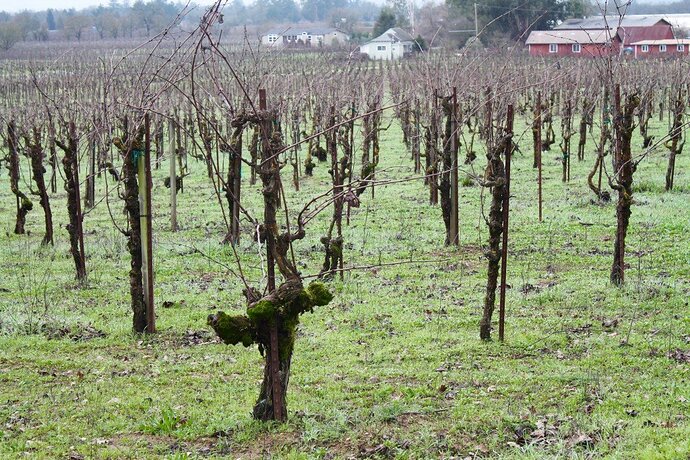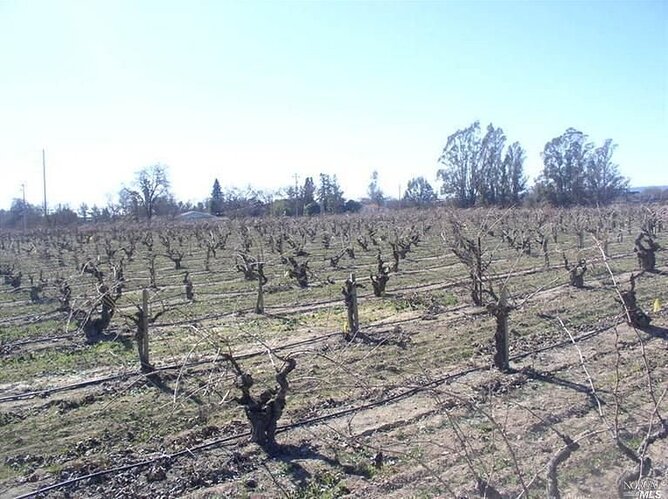Oh! Brian, speaking of the sub-sections of the Russian River Valley AVA:
Kudos to Mike and all the others engaged in saving these heritage sites and for doing such a good job with the heritage grapes.
Hey Drew,
Happy to contribute- the RRVWG has an ongoing initiative on the “Neighborhoods” which I think Rod was a big part of putting together - it specifically calls out “Middle Reach”, “Sebastopol Hills”, “Laguna Ridge”, “Green Valley” and “Santa Rosa Plain” as growing regions… I think a few of us would like to see some more delineation, especially in regards to the Piner-Olivet area, as its topography, soil type and soil origin differ compared to areas to the north, south, east and west.
As far as additional vineyards in the Piner-Olivet area, we work with both young and old vines of Zin. For Old vines, we’re working with Saitone and Maffei on Olivet, Winberrie and Battaglini on Piner, Boschetti off of River and Fanucchi on Wood Road. We were working with Rue (right next to Fanucchi) up until 2016 - but the vineyard sold and we no longer have access… For young vines we pull in quite a bit from both Saitone as well as BCD off of Guerneville Road.
In terms of precise composition of vines on each site, I don’t have the in depth research that Mike Officer has, but in terms of how the vineyard ripen and act, there’s a general trend of the western edge (Olivet area) ripening earlier than the eastern edge, with those wines having a more floral/blue fruit aspect to them. The soils along Olivet are shallower, with a hard clay layer that deters most roots from going too deep. On the whole the vines are scragglier as well compared to further east, although the Carignane at Saitone are pretty impressive specimens.
Wood and Piner Road are later ripening, I think it stays cooler as the fog lingers a bit longer and the soils are heavier, there’s more clay and the vines are bigger and more vigorous growers. There seems to be a higher percentage of Alicante and Petite in the vineyards we work with in this area. Flavors are blackberries and brambles and more density and weight compared to Olivet.
Boschetti off of River is an outlier. It has the most heavy clay, flavor seem to lag behind sugars and gets the most “jam” profile, at least with in our cellar.
Even within this district its a pretty diverse flavor spectrum you can get, which is why Cecil DeLoach was bottling 5 different ones way back in the early 90’s. I guess he’s more famous for his white Zin now, but he put Pelletti, Papera, Barbieri, Saitone and Gambogi on the map, or at least his winemakers did.
Cheers,
Brian
Wow!! Thanks for the detailed information, Brian!!!
Reading your post made me dig out my October, 2004, Wine & Spirits magazine article from Rod Smith, entitled “Raiders of the Lost Zin: Purple Treasures from Russian River’s Centennial Vineyards”.
The author interviews Greg LaFollette, then-winemaker at DeLoach, Mike Officer of Carlisle, and Hartford’s Mike Sullivan. Peter Fanucchi, Mike Feeney (the late Tom Feeney’s nephew), and Lloyd Chelli all contribute their stories in this 4-5 page survey of the vineyards that (at the time) had survived the pressure to replant to Pinot Noir and Chardonnay.
The VIE Winery website does a pretty good job of concisely explaining the arrangement of the “Tom Feeney Vineyard” complex, even if its data also is no longer 100% correct:
“…The ranch consists of five distinct vineyards within a 1 mile radius of each other in the Laguna de Santa Rosa flood plain in Russian River Valley. Tom Feeney’s ‘home block’, what is known as the ‘Piner Vineyard’, was planted in the mid-1940s with cuttings from his neighbor, Bernardo Montafi. Tom later bought his neighbor’s vineyard, commonly know as the ‘Montafi Vineyard’, along with a vineyard on River Road, and two vineyards made famous by DeLoach in the 1980s-90s called the ‘Barbieri’ and ‘Papera’ Vineyards.”
To the extent of my knowledge, the “Barbieri Vineyard” is no more and no winery, save Hook & Ladder, gets fruit from the "Gambogi Vineyard".
The Grape-Nutz archive pages include a considerable amount of TN’s & “Bloody Pulpits” discussing the RRV’s old-vine Zinfandel sites from producers like DeLoach, who produced single-vineyard bottlings from “Gambogi”, “Papera”, “Saitone”, etc.
Siduri has been making a pinot from the (replanted) Barbieri vineyard since 2015.
Kirk Venge’s Croix Estate winery bought the Rue vineyard in 2016. They’ve been bottling their “Wood Estate” zinfandel from it. I’ve tasted the 2016 and it’s quite distinctive, but perhaps has a touch more oak than I would prefer.
If memory serves me, Joel Peterson mentioned on an HVS tour of the the Belloni vineyard (across Wood Rd from the Rue vineyard) a couple of years ago that it and the Belloni as well as the Chelli (Hartford’s Highwire) and Arata (Hartford’s Dina’s) vineyards once had a single owner. The Chelli and Arata vinyards are just east of the Belloni vineyard on Wood Rd. The owner had 4 daughters and thus the original vineyard was parceled up to each daughter many years ago.
For map nerds:
• Tool for Viewing Map of Geological Features by State:
USGS website: “Preliminary integrated geologic map databases for the United States, Western States: California, Nevada, Arizona, Washington, Oregon, Idaho, and Utah (V1.3,
Updated Dec '07)”
Google Play Store: “ARC GIS Explorer” App - required to use the many viewable layers available via USGS and other US departmental resources
• Another Tool:
USDA Geospatial Data Gateway - “The Geospatial Data Gateway (GDG) provides access to a map library of over 100 high resolution vector and raster layers in the Geospatial Data Warehouse. It is the One Stop Source for environmental and natural resources data, at any time, from anywhere, to anyone. It allows you to choose your area of interest, browse and select data, customize the format, then review and download.”
Thanks for the information, Clyde!!
You always have the inside track on the RRV Zinfandel vineyards! ![]()
Rod Smith essentially confirms that in “Raiders of the Lost Zin”. Additionally, according to the Wine & Spirits article:
“… Most the old Zin plantings may well have been part of just a few big vineyards in the old days, but subdivision off property over the years has resulted in a number of smaller, individual vineyards, each under different ownership or management…”
The author goes on to explain how Lloyd Chelli’s Wood Rd. vineyard and its bush vine neighbor were part of the same property in the past but, thanks to Chelli’s uniquely high-trained vines, the two appear as different as night and day.
I am digging through some of the web resources that I can share related to Russian River Valley Zinfandel, RRV geology, etc:
• Quentin Sadler’s Wine Page
“Return to Sonoma: The Russian River Valley”
December 5, 2010
This British blog entry focuses on Joseph Swan. There are two, 2-minute-long video interviews with Mr Rod Berglund (one on the RRV in general, one on RRV Zin - specifically Swan’s work with the “Mancini Vineyard” Zin).
Thread Drift ![]()
Below are two older Wine & Spirits magazine articles that address potentially dividing the Russian River Valley AVA in order to more accurately reflect climatic, geologic, and geographic features within the region.
One discusses the subdivision off Russian River Valley in relation to the inflow of fog from the Pacific Ocean up the river (not the Petaluma Wind Gap);
The other article explores the different geographic/climatic elements of the Green Valley.
Wine & Spirits magazine
“Patterns in the Fog: Pinot Noir Enclaves within the Russian River Valley”
by Rod Smith
January/February 2004
Mapping consultant Mike Bobbitt (see below) and winemakers Dan Goldfield (Dutton-Goldfield), Fred Scherrer (Scherrer), Gary Farrell (Gary Farrell), and Rod Berglund (Joseph Swan) contribute their expertise in the assertion that the RRV AVA is in fact, due to fog/climate and topography/geology, an agglomeration of five separate sub-sections.
The areas (barring hilltops and such) go from the coolest-to-warmest as one’s finger moves Southwest-to-Northeast across the map. The 5 distinct regional divisions are: Green Valley, Laguna Ridge, the Middle Reach, and the Santa Rosa Plain.
Wine & Spirits magazine
“Green Valley”
by Rod Smith
April, 2001
This piece, while incredibly well-written, has squat to do with Zinfandel. Sure, there are a couple of vineyards remaining in the Green Valley (if not the insanely large Sonoma Coast AVA), the article is focused solely on Pinot and Chardonnay.
Mike Bobbitt is featured in the following article:
SF Gate
“The Fog Chasers: The Wines of Sonoma County’s Green Valley AVA Receive a Cold, Clammy Embrace”
by Stephen Yafa
May 12, 2005
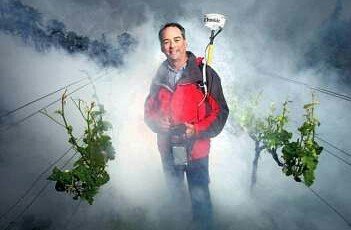
Love the Geekyness Drew! ![]()
I was looking for any online information about the “Arata Vineyard” (2 parcels at the NW corner of Wood/Fulton, @ 2611 Fulton Rd), when I rediscovered this thread.
Mr Maloney’s comments provide an excellent source for a bit of deep-diving into a few extant RRV Zinfandel/mixed blacks vineyards:
In addition to being sources of grapes for Brian, the following RRV vineyards have been used for many Russian River Zinfandel producers:
- “Battaglini Vineyard” -(aka “Twin Pines Vineyard”) owned by Battaglini Estate Winery (2948 Piner Rd) since 1988, formerly the old Lagomarsino Winery. The winery bottles 4 Zinfandel wines and one Petite Sirah from the 1885 plantings. According to the Battaglini winery website:
“…The 25 acres of old vines consisting of the Zinfandel and Petite Sirah vines, were supplemented in 1996, with a new planting of Chardonnay grapes to take advantage of the favorable climate. The ancient vine Zinfandel and Petite Sirah are now amongst the oldest producing vines in the United States.”
-
“Boschetti Vineyard” - owned (I think) by River Road Vineyards, a brand of Ron Rubin Wines; “Boschetti Old Vine Zinfandel” product information link.
-
“Fanucchi Vineyard” - (planted ~1906) owned by Peter Fanucchi of Fanucchi Vineyards; his father purchased the Zinfandel/mixed blacks site in 1971, and bought an adjacent plot of land in 1981, which they planted to Trousseau Gris.
-
“Maffei Vineyard” (2207 Olivet Rd) planted in the 1920’s, according to the “Maffei Vineyard” profile on the Historic Vineyard Society website.
-
“Saitone Vineyard” planted in the 1890’s, according to the “Saitone Vineyard” profile on the Historic Vineyard Society website.
-
“Rue Vineyard” - as noted above by ClydeUnderwood, now bottled by Croix Estate Winery as the “1904 Vineyard” Zinfandel.
Virginia Boone of Wine Enthusiast rated the 2017 bottling 91 points.
- “Winberrie Vineyard” - planted in the early 1900’s, according to the “Winberrie Vineyard” profile on the Historic Vineyard Society website.
The “Winberrie Vineyard” was used as a primary fruit source for Gordian Knot Winery, ending with the 2015 vintage. I am uncertain if the new “Winberrie Knolls” Zinfandel from Hartford Family Wines (known for its Wood Road-sourced single-vineyard Zins) is from this site.
As I mentioned above in another post, newer vines were added to the historic “Battaglini Vineyard” (in 1996, I think). It is a relatively small plot so, when any vacant spots in rows are filled, the total percentage of old-vine material will decrease by a greater proportion (compared against larger vineyards).
Having said that, I read an article that raised a couple of salacious allegations against this RRV site.
The Anderson Valley Advertiser
“Prisoners of the Vines”
by Mark Scaramella
January 22, 2013
“…using Google Street View from Piner Road, the Battaglini vineyard is clearly not the vineyard old man Lagomarsino planted in 1885 because the vines are in the typical high-density jam-packed tight row arrangement typical of most modern vineyards, complete with huge pond and a mansion-style home and tasting room surrounded by grapevines…”.
I believe this article’s author was focused on exposing the vulnerabilities and safety hazards faced by non-union employees of large vineyard management companies. An unfavorable portrayal of the featured corporation’s grape-growing client was icing on the cake, so to speak.
Over the course of an ancient vineyard’s lifespan, gradually introduced modifications could transform its appearance dramatically:
· Vine spacing density can be intensified by planting between existing vines;
· Diseased, damaged, or dead vines may be replaced by different grape varieties/clones;
· The vines might be retrained from one style to another - compare the vertically-trained Zinfandel vines at the “Chelli Vineyard” to the bushy head-trained ones at “Belloni” and “Rue” (all 3 were originally pieces of a single vineyard);
· Irrigation vs dry-farming, neglect vs renovations, and other factors play a role in the difference of appearance between heritage viticultural sites across the West Coast.
I will not address the other allegation made by the article’s author, as I have no way of knowing the veracity of his statement. Choose you battles, as the adage goes!
**** EDIT **** Disregard the above article’s claims. The vineyard mentioned by the author was not the “Battaglini Vineyard”!
Hi Drew,
The author of that 2013 article had no idea what he was talking about. Factually it’s a train wreck, especially with respect to Battaglini. Clearly he had (has?) a large bug up his you-know-what with regards to wineries and vineyards.
Thanks for chiming in, Mike! ![]()
The Anderson Valley Advertiser appears to provide solid reporting of Mendo wine-related history, although some content obviously is more editorial/opinion-based. As the writer of the above piece professed to cite official documents, I was uncertain as to whether he was concerned with uncovering unpleasant truths or if he “doth protest too much”.
I love California’s historic viticultural regions. Too often, I encounter a void of information between the Prohibition years and the emergence of larger wine publications in the 1970s and '80s. Even then, it can be challenging sorting out the dross.
Uncorked Wine Travels
“Battaglini Winery Touts ‘Viti Vecche Vini Buono’”
by Deborah Mines
May 30, 2016
"…Giuseppe and his wife Lucia, immigrated from Italy to California in 1956, seeking a similar Italian lifestyle amongst the vines.
"The original owner and vintner, Bartholomew Lagomarsino, also an Italian immigrant, planted Zinfandel and Petite Sirah in 1885 on this very site.
“Today, the 1885 vines still flourish and produce incredible full-bodied Zinfandel and Petit Sirah, which have become the Battaglini Winery flagship wines. In addition, the vineyards are planted to Chardonnay…”.
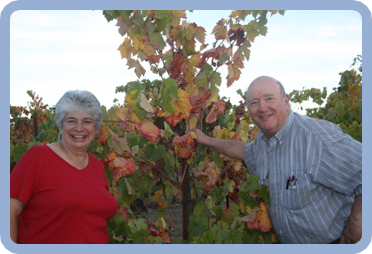
Battaglini Estate Winery website:
https://battagliniwines.com/
An older online article detailed the acquisition of an old-vine Zinfandel plot at 2801 Piner Road, by Crimson Wine Group.
Wine Industry Insight
“Crimson Wine Buying Sonoma Vineyard With 98-Year-Old Zinfandel Vines”
by Lewis Perdue
September 3, 2014
"Crimson Wine Group (OTC: CWGL) has agreed to pay $2.6 million for a 24-acre Sonoma County vineyard parcel containing 13 acres of Zinfandel vines planted circa 1916.
"An 8-K filed with the by Crimson Wine on August 29, said the land — on Piner Road north of Santa Rosa — was purchased from Silverado Sonoma Vineyards LLC. Aerial photos indicate that the vineyard has 20 acres planted including the heirloom Zinfandel vines which have been used in ‘Old Vine Zinfandel’ wine programs.
“According to the Sonoma County Assessor and other public sources, the property also has a barn and a 1,461-square-foot, four-room home with two bedrooms and one bath. The property is part of the county ag preserve.”
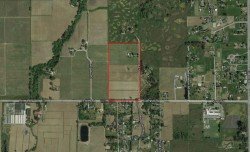
“According to the purchase and sale agreement, Crimson will assume a grape purchase agreement with Justin Vineyards & Winery (dba Landmark Vineyards) as well as two other unspecified lease agreements with Ledson Winery and Carlisle Winery & Vineyards…”.
The Realtor website’s profile of 2801 Piner Rd includes 8 photos of the vines…
"Property Overview - Hard to find quality vineyard with Old Vine Zin ( 13 acres ) and Pinot ( 7 acres ). House needs remodeling. 7 Acres of Zin is leased for [omitted]. per year for 5 years. Remaining Zin is also leased for [omitted] net for 3 years. Vineyard produces a very good income. Nice views of Mt. St Helena form the home. Very private well off the main road.
“This property overview is from the previous listing when the home was listed for sale in Feb 10, 2014.”
According to the EveryVine website map, this site is identified as “Feeney Vineyard (#5)”. Is this the “Montafi Vineyard”?
Yes. The Montafi vineyard is NW of the intersection of Piner Rd and Bossa Rd about 1/4 mi west of Fulton Rd.
Crimson purchased Seghesio in 2011 which allowed Seghesio to purchase the Montafi vineyard in 2014. Seghesio has made a Montafi zin since 2015. It’s their flagship zin now and and is quite good.
If you spin that street view to the left you can see Winberrie Knolls Rd and the Winberrie vineyard on the other side of Piner Rd. Hartford started making a Winberrie zin in 2018. The Winberrie vineyard is thought to date from 1906.
https://www.jfwthekey.com/asset/2018-hartford-winberrie-knolls-old-vine-zinfandel-wis
